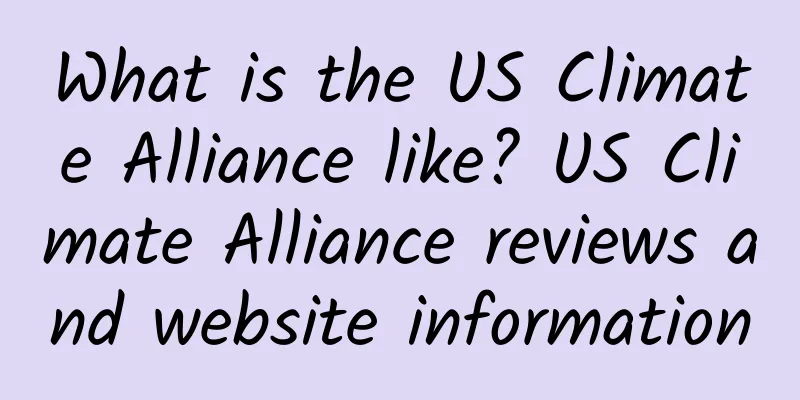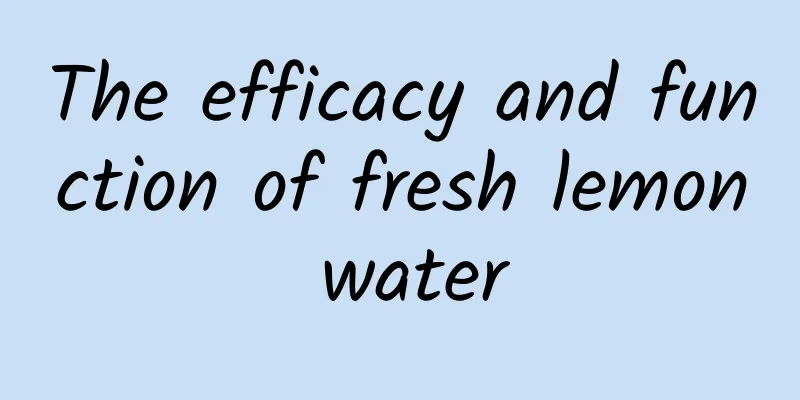What is the US Climate Alliance like? US Climate Alliance reviews and website information

|
What is the United States Climate Alliance? The United States Climate Alliance is an environmental organization in the United States. It was established in June 2017 after US President Trump announced his withdrawal from the Paris Agreement. Its members include some US states and unincorporated territories. It aims to achieve the US goals in the Paris Agreement and reduce US carbon emissions. Website: www.usclimatealliance.org The U.S. Climate Alliance: Leading the Way in Environmental ActionAs the global climate change problem becomes increasingly serious, governments and organizations around the world are actively seeking solutions. Against this backdrop, the United States Climate Alliance came into being and became an important force in promoting environmental protection and reducing carbon emissions. The U.S. Climate Alliance was formed in June 2017, just as President Trump announced his withdrawal from the Paris Agreement. In response to this decision, some states and unincorporated territories quickly united to remain committed to achieving the goals set in the Paris Agreement. By working together, these members aim to reduce the United States' overall carbon emissions and set a responsible example globally. Background and ObjectivesThe formation of the U.S. Climate Alliance can be traced back to June 1, 2017, when U.S. President Trump announced that the United States would withdraw from the Paris Agreement. This decision sparked widespread controversy, with many state governments and local leaders believing that this was a serious departure from global environmental responsibility. In order to make up for the policy gap at the federal level, California Governor Jerry Brown, New York Governor Andrew Cuomo and Washington State Governor Jay Inslee jointly launched the U.S. Climate Alliance. The main goal of the alliance is to ensure that the United States can fulfill the emission reduction targets promised in the Paris Agreement, that is, to reduce greenhouse gas emissions by 26% to 28% compared to 2005 levels by 2025. In addition, the alliance is also committed to promoting clean energy transformation, improving energy efficiency, and promoting sustainable development. Membership and developmentThe U.S. Climate Alliance was initially initiated by California, New York, and Washington, and subsequently attracted more states to join. As of the latest statistics, the alliance members have covered more than half of the U.S. states, including but not limited to Connecticut, Colorado, Vermont, New Jersey, Hawaii, etc. These states represent about half of the U.S. population and gross domestic product (GDP), showing the alliance's influence across the country. In addition to state governments, the coalition has also received support from many cities, businesses, academic institutions and non-governmental organizations. This multi-party collaboration model has laid a solid foundation for achieving broader environmental goals. Main Initiatives and AchievementsSince its inception, the U.S. Climate Alliance has taken a number of important steps to promote environmental protection and carbon reduction:
These efforts have achieved remarkable results. According to relevant reports, carbon emissions in the member states of the alliance have continued to decline in the past few years, and economic growth has not been negatively affected. This shows that environmental protection and economic development can fully complement each other. Challenges and future prospectsAlthough the U.S. Climate Alliance has made remarkable achievements, it still faces many challenges. First, the uncertainty of federal policies may interfere with the work of the alliance. Second, the differences between different states in terms of resource endowments, industrial structures, etc. also increase the difficulty of coordination. In addition, the need for popularization of public awareness and technological breakthroughs cannot be ignored. Looking ahead, the U.S. Climate Alliance will continue to deepen internal cooperation and explore more innovative solutions. For example, further promoting carbon pricing mechanisms, optimizing energy storage technologies, and enhancing community resilience will all become key areas of focus. At the same time, the Alliance will also work to expand its influence and attract more regions and stakeholders to participate. ConclusionAs an important force in the United States' response to climate change, the US Climate Alliance not only reflects the responsibility of local governments, but also provides valuable reference for other countries and regions. Through unremitting efforts, it is gradually changing the environmental governance landscape in the United States and even the world. If you want to learn more about the alliance, you can visit its official website: www.usclimatealliance.org . Let us look forward to the fact that under the leadership of the U.S. Climate Alliance, mankind will soon be able to usher in a greener, healthier and more sustainable future. |
Recommend
The efficacy and function of Zanhuang jujube
Zanhuang jujube, also known as Zanhuang long juju...
Banana pear's efficacy, effects and taboos
Fruit pears are very common in our daily life, an...
White Clam Porridge
I have a lot to say about white clams, so let me ...
Why don't Hui people eat pork?
China is a big family of 56 ethnic groups, and di...
How to grow geraniums How to grow geraniums
Geranium, also known as hydrangea, is an ornament...
Does eating longan in summer make you get angry? How to eat longan in summer without getting angry
Longan is a common nourishing fruit that many peo...
How is the Syrian Embassy in China? Reviews and website information of the Syrian Embassy in China
What is the website of the Syrian Embassy in China...
The benefits of eating ten coriander
Coriander is a plant that can be mixed into cold ...
Difference between gooseberry powder and henna powder
People often use currant powder and henna powder ...
How to eat Qinghai ginseng fruit
Qinghai ginseng fruit is one of the most famous l...
eBay (Austria) How is eBay? eBay (Austria) reviews and website information
What is eBay (Austria)? eBay (Austria) is the Aust...
Angelica and Chuanxiong Congee
What I’m going to introduce to you below is Angeli...
What should you pay attention to when eating broad beans?
Many people have eaten broad beans. They are a la...
How is Google? Google reviews and website information
What kind of website is Google? Google is currentl...
Can pork and mung beans be eaten together? What are the benefits of eating pork and mung beans together?
Pork is very common, so it can be paired with alm...









